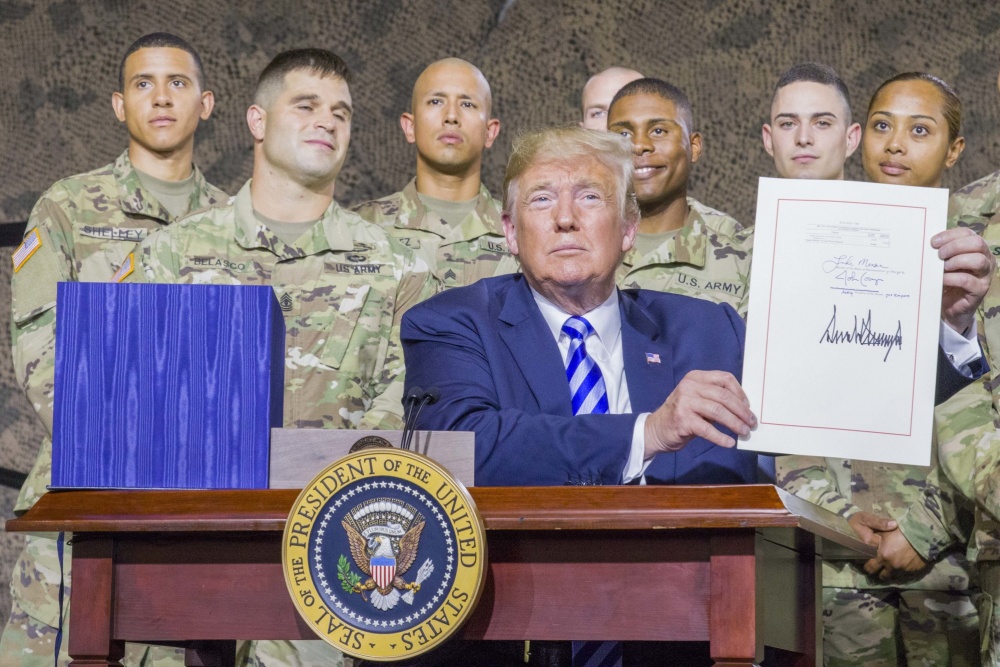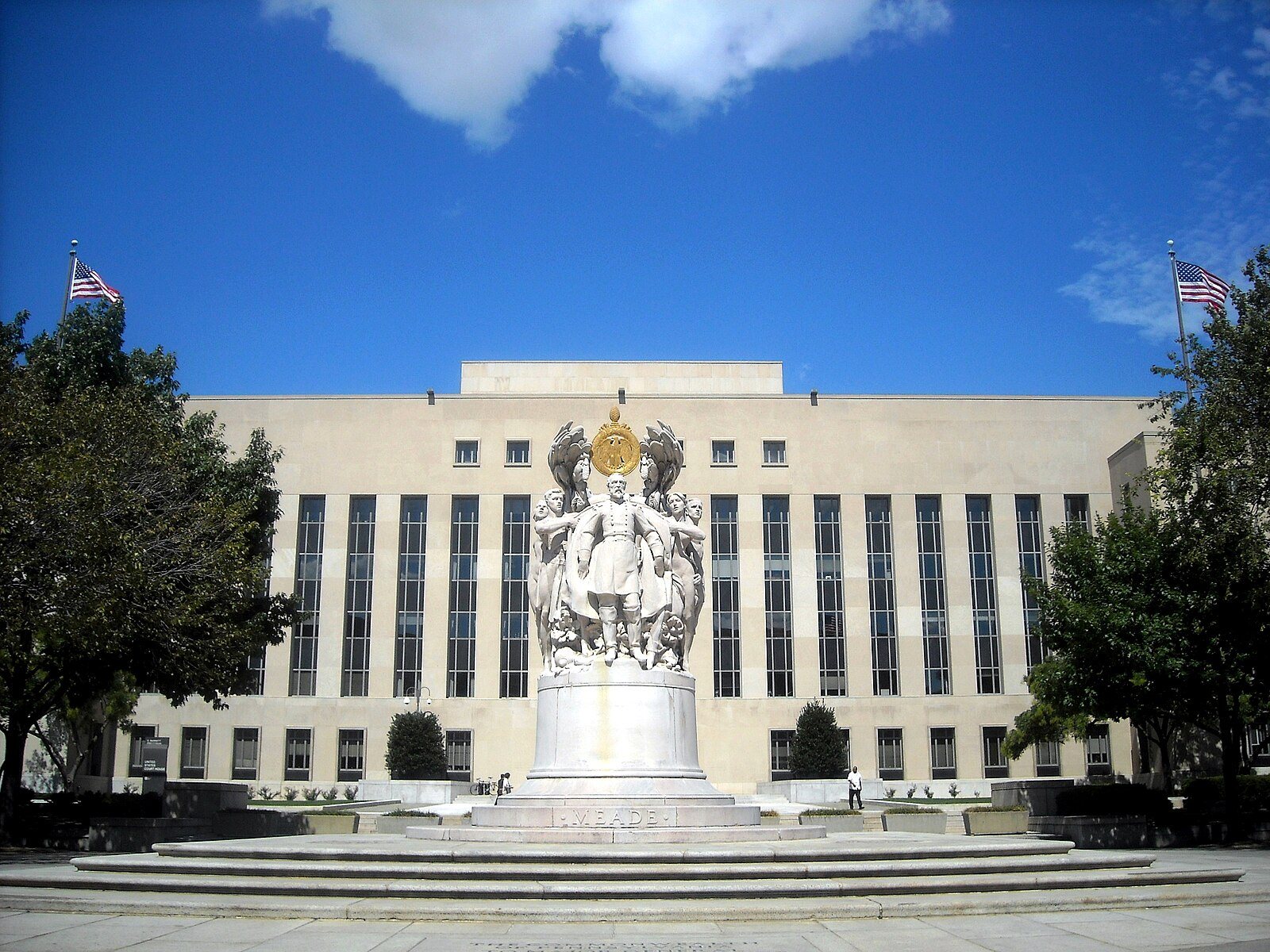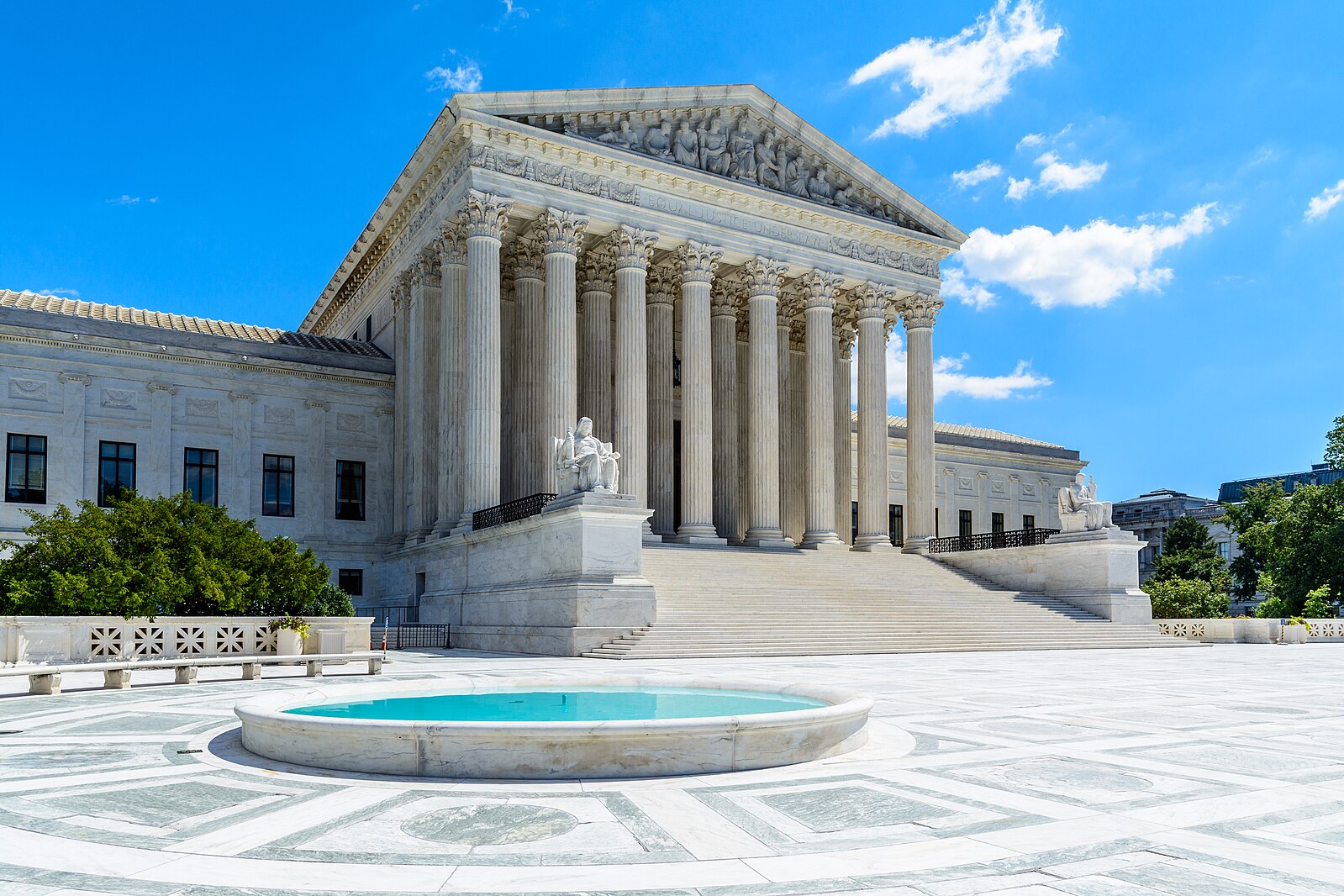Huawei Technologies v. U.S.: Summary and Context
As the competition for 5G continues, one of the largest players, Chinese company Huawei Technologies, is facing concerns from numerous countries that using Huawei equipment exposes their national networks to spying or worse by the Chinese government.

Published by The Lawfare Institute
in Cooperation With

As the competition for 5G continues, one of the largest players, Chinese company Huawei Technologies, is facing concerns from numerous countries that using Huawei equipment exposes their national networks to spying or worse by the Chinese government. These concerns stem from the nature of the equipment Huawei provides, much of which is used in networking and connectivity; Huawei founder Ren Zhengfei’s and Huawei Technologies’s ties to the Chinese Communist Party; Huawei’s history of industrial espionage; and the nature of the rule-of-law in China. It is almost inconceivable that Huawei, a major Chinese telecommunications company with links to the Chinese party-state, would be able to refuse if the Chinese government ordered it to take actions that compromised other countries’ security, and there are no domestic constraints that would plausibly prevent the government from doing so. (See Bobby Chesney’s article on the new FISA actions against Huawei for more on the relationship between Huawei and the Chinese government).
As countries such as the United Kingdom and Germany (as well as nonstate entities such as MIT) wrestle with how to confront the potential risks posed by Huawei, outcomes have ranged from full cooperation with Huawei, to managing Huawei’s risks, to complete bans. The U.S. has come down firmly on the side of more caution, going so far as to threaten that if allies do not cease to use Huawei products, the U.S. will be forced to pare back security cooperation. In accordance with this strict stance, the U.S. government imposed a ban on any Huawei products in proximity to the U.S. government. Section 889 of the 2019 National Defense Authorization Act (NDAA), passed by Congress and signed by President Trump, mandates:
(a) The head of an executive agency may not—
(A) procure or obtain or extend or renew a contract to procure or obtain any equipment, system, or service that uses covered telecommunications equipment or services as a substantial or essential component of any system, or as critical technology as part of any system; or
(B) enter into a contract (or extend or renew a contract) with an entity that uses any equipment, system, or service that uses covered telecommunications equipment or services as a substantial or essential component of any system, or as critical technology as part of any system.
In the NDAA “covered telecommunications equipment” is defined to include “[t]elecommunications equipment produced by Huawei Technologies Company or ZTE Corporation (or any subsidiary or affiliate of such entities).”
In response to the increased pressure, Huawei is going on the offensive. Two U.S. firms representing Huawei recently registered under the Foreign Agents Registration Act, indicating an escalation in public relations efforts. On March 3, detained Huawei CFO Meng Wanzhou sued the Canadian government for violations of the Canadian constitution related to her arrest. And on March 6, Huawei and its U.S. subsidiary sued the U.S. government and the secretaries of labor, health and human services, education, agriculture, veterans affairs, and the interior, as well as the administrator of the General Services Administration. The lawsuit argues that the NDAA is an unconstitutional bill of attainder, a violation of due process and a violation of the separation of powers. There are some questions as to whether these arguments have much chance of success, and thus it is worth examining the broader context for Huawei’s suit and the motives that may have led to it beyond seeking invalidation of the law.
Complaint
Facts
Huawei’s complaint emphasizes that neither Huawei USA nor its parent company have any Chinese government ownership. It seeks to present the NDAA as an ill-conceived aberration from well-constructed cybersecurity risk mitigation, offering a history of U.S. government cybersecurity efforts from a 1998 pesidential directive under President Clinton through 2018 and specifically naming the contributions of each president. Huawei emphasizes the broad-based “holistic” nature of these efforts: “[T]he Executive Branch (and, sporadically, Congress) recognized that supply chains are global, and did not claim, pretend, or suggest that cybersecurity risks could be meaningfully addressed by taking targeted action aimed only at particular companies.”
Legislative Intent
In contrast to this broad approach, the complaint describes recent congressional actions as “singling out” Huawei “on the purported basis of unsubstantiated and largely unarticulated concerns, themselves apparently stemming from the belief that Huawei is owned, controlled, or subject to improper influence by the Chinese government.” It asserts that Huawei has been open and transparent and has complied with “extensive” congressional investigations. Nevertheless, the complaint suggests, this cooperation was met with bad faith.
The complaint emphasizes a 2012 report from the House Permanent Select Committee on Intelligence (HPSCI), in which the committee noted that it could “not prove wrongdoing” but that Huawei had failed to proactively alleviate congressional security concerns. The complaint emphasizes that “the report cited no evidence that any equipment manufactured or services provided by Huawei had ever posed a national security risk. Nor did it cite any evidence that the Chinese government owned or controlled or was connected to Huawei, such that it could uniquely influence Huawei in any way.”
The NDAA
According to the complaint, the HPSCI report resurfaced in 2017, during congressional debates over the NDAA. Huawei carefully details floor statements from members of Congress in which they suggested that Huawei deserved the “death penalty” and was “nothing more than [an] extension[] of the Chinese Communist Party” and a “bad apple[].”
In describing the implications of the NDAA, Huawei notes that contractors will have to choose between federal contracting and using any Huawei equipment, even if the equipment is unrelated to defense or, “in an extraordinary example of overbreadth,” to any work performed for the government. It observes that the prohibition is irrevocable, which is unique to Huawei and one other company (ZTE Corporation, which Trump controversially rescued from a Commerce Department punishment last year). Huawei argues that it has suffered significant injury, including constitutional harm, competitive injury from a competitive disadvantage, economic injury through loss of contracts, and reputational injury from being branded “disloyal” and a national security risk.
Three Claims for Relief
Bill of Attainder
Huawei’s primary argument is that the NDAA is an unconstitutional bill of attainder. Article I, Section 9, of the Constitution prohibits “Bill[s] of Attainder,” laws that, under Supreme Court precedent, “legislatively determine[] guilt and inflict[] punishment upon an identifiable individual without provision of the protections of a judicial trial” (Nixon v. Administrator of General Services). The Supreme Court has established three tests for determining whether a legislative act imposes punishment: the historical test, which looks at whether the burden inflicted is consistent with the types of burdens that have historically been deemed punishment; the functional test, which examines “whether the burden is a means to an end or an end in and of itself” by balancing the purpose of the act and the burdens imposed; and the motivational test, which ascertains whether Congress’s intent was to punish. The most important test is the functional test.
Huawei argues that the NDAA is a bill of attainder because it singles out Huawei and imposes significant burdens with the intent to punish. Huawei argues that permanent debarment from business with the federal government is consistent with acts traditionally considered punitive, that it subjects Huawei to burdens “on the basis of its identity” as opposed to issuing general standards for the executive branch to apply, and that this burden is severe and inescapable. Further, Huawei argues that the way in which members of Congress spoke about Huawei in the bill’s legislative history, as well as the fact and manner of the ban, have the effect of branding it “disloyal.” It argues that the ban is overbroad, because it covers contractors who have no relationship to national security, and underinclusive, because there are other Chinese companies that Congress did not name. And Huawei cites the use by members of Congress of terms including “death penalty” and “extensive ties with the Chinese Communist Party” to argue that the NDAA is motivated not only by an intent to punish but also by “an irrational fear that, because Huawei is a successful company organized in China, it must be subject to the direction and control of the Chinese government.”
Due Process
Huawei’s second argument is that singling out the company in this way violates its due process rights. The complaint argues that the NDAA deprives Huawei of the liberty to sell to federal agencies, as well as by stigmatizing it and “discouraging other entities across the United States from doing business with Huawei.” It argues that it was deprived of this liberty without “any pre-deprivation opportunity to be heard, present evidence, or defend itself,” in violation of the due process requirement that a legislative deprivation of liberty be “imposed in accordance with general rules.”
Separation of Powers
Finally, Huawei argues that the NDAA violates the separation of powers because applying legislative rules to enumerated individuals “constitutes the exercise of executive and/or judicial power.” The complaint locates this cause of action in Fletcher v. Peck, a Supreme Court case from 1810, and two later concurrences (Powell in INS v. Chadha and Breyer in Plaut v. Spendthrift Farm). The complaint argues that, by specifically prohibiting the use of Huawei products while leaving up to the secretary of defense the decision whether other Chinese entities are state controlled, Congress has made a “legislative adjudication” that should be made by the judiciary or the executive, and has thus deprived Huawei of recourse that might otherwise be available “such as opportunities for executive consultation and subsequent judicial review.”
Kaspersky
Huawei’s bill of attainder argument follows in the footsteps of a similar lawsuit filed in the U.S District Court for the District of Columbia in 2017 by Russian company Kaspersky Lab. The lawsuit protested a provision in the 2018 NDAA that prohibited U.S. government entities from using Kaspersky software, arguing that singling out Kaspersky in a legislative act was a legislative punishment and therefore an unconstitutional bill of attainder.
The court rejected this argument, observing that the U.S. had reasons to be suspicious of Kaspersky:
The concerns were fueled, in very summary form, by some combination of the following facts: Kaspersky Lab products enjoy extremely broad access and elevated privileges within the computer systems on which they are installed; Kaspersky Lab is headquartered in Russia; Kaspersky Lab and its founder and Chief Executive Officer, Eugene Kaspersky, have close connections to the Russian government and intelligence services; Kaspersky Lab products cycle users’ data to the company’s servers that are based in (or accessible from) Russia; Kaspersky Lab is subject to Russian laws that allow the Russian government to request or compel assistance from Russian companies, and is also susceptible to non-legal forms of pressure from the Russian government.
The court determined that the ban on government use of Kaspersky products was not a legislative punishment because it failed all three of the tests. It failed the historical test because it was “nothing like” cases in which an employment ban constituted legislative punishment, because it did not affect any person’s employment or livelihood. For the functional test, the court determined that the U.S. had a “prospective, risk-prevention function” of “securing our Nation’s networks and computer systems from malicious cyber-threats,” the importance of which “can hardly be overstated,” and the ban was “rationally related” to this function. And the burdens, while significant, were in no way disproportionate: The loss of income was “a tiny portion” of the company’s revenue, and the reputation harm was in no way comparable to reputational burdens in previous bill of attainder cases, such as being deemed a sex offender. Finally, the court held that the legislative history evinced a motivation to protect rather than to punish, that the burden to prove motive is the plaintiff’s and so a silent record cannot demonstrate punitive intent, and moreover that the statements of one member of Congress, even the bill’s sponsor, could not show legislative intent.
Kaspersky appealed, and the U.S. Court of Appeals for the D.C. Circuit upheld the lower court’s ruling. The D.C. Circuit noted particularly that the provision banning Kaspersky “has the earmarks of a rather conventional response to a security threat: remove the risk.” The court also noted that Kaspersky was “‘legitimate class of one’” because “Kaspersky posed the most urgent potential threat,” and so it was unimportant that other entities could potentially pose the same risk. It also held that burdens that have historically been held to be punishment when applied to people, such as branding a person as disloyal, are not necessarily punishment when applied to corporations. And it emphasized that “even if [statements by the bill’s sponsor, Sen. Jeanne Shaheen] did reveal a personal desire to punish Kaspersky, the company cites no corroborating evidence indicating that other members of Congress shared her supposedly punitive motivations.” According to the Court, “[s]everal isolated statements” by lawmakers “are not sufficient to evince punitive intent.”
Kaspersky vs. Huawei
The circumstances of the Kaspersky case are similar to those of the Huawei complaint, including the company-at-issue’s efforts to cooperate with Congress and its arguments that Congress failed to prove actual risk. While the Kaspersky case is not binding on the Eastern District of Texas, where Huawei filed suit, Huawei will need to either persuade the district court that the D.C. courts were wrong or differentiate itself from Kaspersky. Though the Huawei complaint doesn’t mention the Kaspersky suit, several elements of the pleadings appear to be specifically tailored to teasing out potentially relevant distinctions:
- In discussing the similarity between Huawei’s burden and historical punishment, the complaint specifically takes note of Sen. Tom Cotton’s comments that the bill sought to put Huawei “out of business” and references to Huawei as “untrustworthy,” tying the case more closely to the loss of employment opportunities due to disloyalty—specifically referred to by the D.C. District Court as an example of historical legislative punishment.
- The complaint notes that the NDAA disqualifies Huawei from doing business with “a substantial part of the U.S. economy” and argues that such a ban is overbroad, particularly because it contains no procedural safeguards, and underinclusive, all of which the D.C. Circuit expressly discussed when it dismissed the idea that Kaspersky’s burden was disproportionate to the risk. Surprisingly, the complaint does not quantify the harms to Huawei of the loss of business, or the fraction of Huawei’s business that will be lost under the NDAA—in the Kaspersky case, both courts repeatedly noted that the business lost to Kaspersky was a “tiny fraction” of Kaspersky’s total business (although Huawei may bring up this issue later).
- The complaint refers to numerous statements, by several different members of Congress, in the legislative history as evidence of a punitive intent, citing words like “punish” and references to the “death penalty” as suggesting more deliberate intent than did the Kaspersky record. However, the most inflammatory statements came from just one or two senators, as for Kaspersky.
Why Sue?
All three of Huawei’s arguments face steep odds. Therefore, some commentators believe that Huawei’s purpose in bringing the suit was not to overturn Section 889. Noah Feldman in Bloomberg suggests that Huawei is seeking a propaganda coup against U.S. rule-of-law claims, alleging that the U.S. is hypocritically flouting its own Constitution for political gains (particularly when paired with the illegal-detention claims in Meng’s suit against Canada). This complements recent references by Huawei personnel to Edward Snowden and the National Security Agency wiretapping scandal, and contrasts Huawei’s claim that Chinese law prohibits Chinese government interference with Huawei (this claim is reinforced in a legal interpretation memorandum that Huawei commissioned from a Chinese law firm, but many commentators note that the interpretation is misleadingly incomplete and misstates the nature of law in China). Alternative suggested reasons for the Huawei lawsuit include compelling discovery, potentially allowing Huawei to seek access to undisclosed information held by the U.S. government, or signaling to other countries that are endeavoring to resist U.S. pressure to ban Huawei products.
As a public relations signal, the lawsuit demonstrates that Huawei will fight accusations that it poses a national security threat, and that one strategy it will likely rely on is to suggest that the U.S. government is motivated by animus rather than by legitimate fear. This strategy coordinates with messaging by Chinese officials, including the Chinese head of the U.N. International Telecommunication Union. The lawsuit’s text provides support for this interpretation: Huawei repeatedly notes that Congress has not produced evidence to justify singling out Huawei, despite the fact that the D.C. District Court expressly observed that a silent record works against the plaintiff, as “statutes are presumed constitutional.” The complaint describes harm to Huawei’s reputation in very strong terms. It carefully describes inflammatory statements made by senators, repeating (several times) assertions by Sens. Marco Rubio and Tom Cotton that Huawei is a “Trojan horse” that deserves the “death penalty” and arguing that these statements, along with statements by “members of Congress” “that Huawei was ‘nothing more than [an] extension[] of the Chinese Communist Party,’ and that Huawei had ‘extensive ties with the Chinese Communist Party’” demonstrated “anti-Communist phobia” on the part of the U.S. Congress—though per the complaint itself, both of these statements came from Cotton. These allegations perform double duty: The congressional statements contribute to its legal case under the motivational test, while to outsiders already inclined to be suspicious of the U.S.—and particularly combined with Trump’s comments that Meng’s detention will be part of trade talks—the allegations and the conclusions the complaint draws may suggest that the U.S. government is petty or even vindictive.
However, not all observers agree that Huawei’s complaint can be lightly written off. And whether or not Huawei’s primary goal is to invalidate provisions of the NDAA that prohibit the use of its products for U.S. government purposes, the lawsuit indicates that the company is unlikely to back down quietly; it will fight aggressively to protect its market share in the U.S. and abroad.


.jpg?sfvrsn=407c2736_6)


